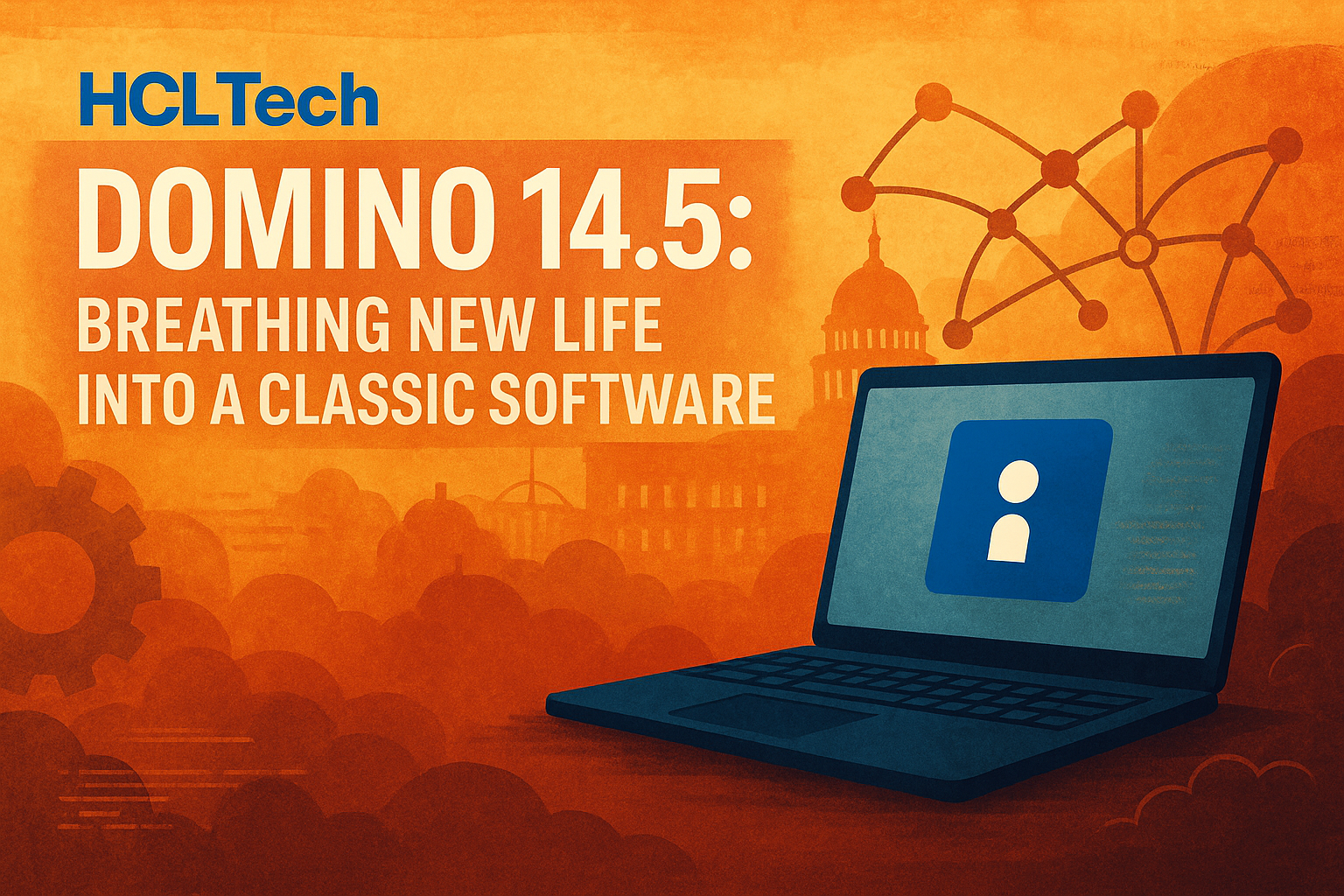Seven years after acquiring Domino from IBM, HCL Technologies (HCLTech) is proving that some legacy products can be revitalized to meet today’s most pressing technological and geopolitical needs. With the release of Domino 14.5, HCLTech is positioning itself as a key player in the sovereign software space—one that prioritizes data independence, compliance, and trust, especially for government clients.
A Strategic Facelift for Domino
When HCLTech bought Domino and seven other software products from IBM in 2018 for $1.8 billion, the acquisition was more than just a diversification move. It signaled the company’s ambitions to move deeper into the software products business—a rare step for an Indian IT outsourcer. At that time, Domino was already decades old, but deeply embedded within enterprises and government systems across the globe.
Fast forward to 2025, and Domino is back in the spotlight. The new 14.5 release doesn’t just polish an old product—it redefines its purpose. The latest update introduces AI-led capabilities, robust security enhancements, and sovereign collaboration tools aimed directly at government and critical infrastructure sectors.
Sovereign AI and Collaboration Solutions
A cornerstone of Domino 14.5 is its focus on sovereign AI and sovereign collaboration solutions. These offerings are designed to ensure that sensitive government data—spanning emails, chats, video calls, and documents—stays within national borders and under domestic jurisdiction.
Richard Jefts, Executive Vice-President and General Manager for HCLSoftware, emphasized that governments and critical sectors should not be forced into digital compromises that threaten independence or data privacy. By embedding sovereign AI features, HCLTech is not just offering a product, but a framework for digital autonomy.
Industry experts echo this sentiment. Phil Fersht, CEO of HFS Research, notes that governments are increasingly wary of relying on global hyperscalers or SaaS platforms where data sovereignty is at risk. Domino 14.5, he argues, taps directly into that discomfort, providing the assurance of compliance and control under local oversight.
The Balancing Act: Legacy vs. Innovation
Behind the scenes, Domino’s revival was not guaranteed. Executives within HCLTech debated whether to slow updates on Domino in favor of VoltMX, a homegrown no-code software platform. Yet, Domino’s entrenched role within client operations made it almost irreplaceable. For many organizations, abandoning Domino risked destabilizing critical processes.
Government contractors, in particular, resisted switching because of security concerns and Domino’s proven reliability. This pushback, combined with steady revenue streams, persuaded HCLTech’s leadership to double down on Domino instead of phasing it out.
The result? Domino 14.5 not only preserves legacy workflows but modernizes them with tools like VoltMX for front-end flexibility and embedded automation for speed and efficiency.
Financial Stakes and Market Context
Domino has also proven to be a financial cornerstone. Last year, HCL’s software products business contributed $1.43 billion—over 10% of the company’s total $13.84 billion revenue. While the unit has faced challenges, including leadership churn and margin fluctuations, it continues to bolster overall profitability.
With operating margins of 26.6% in FY24, the software division remains lucrative compared to people-intensive outsourcing services. Even as HCLTech trimmed its profitability forecast recently due to external pressures, the long-term bet on software, and specifically Domino, still looks sound.
Competitive Landscape: Aiming at Governments
HCLTech’s strategy aligns with a broader trend among Indian IT majors. Tata Consultancy Services (TCS), for example, recently launched its sovereign cloud network, signaling its own ambition to secure more government contracts. For HCLTech, Domino 14.5 is the equivalent move—an attempt to capture public sector demand with a software suite that blends tradition with cutting-edge capabilities.
Government clients already make up nearly half of Domino’s 400-strong user base, giving HCLTech a head start in this market. By reinforcing its sovereign credentials, the company aims to expand that footprint significantly.
Conclusion: Domino’s Second Act
Domino’s journey reflects a broader truth in technology: legacy products, when carefully reimagined, can adapt to modern challenges. HCLTech’s decision to breathe new life into Domino—rather than abandon it—underscores the value of combining historical reliability with future-focused innovation.
For governments concerned about sovereignty, security, and compliance, Domino 14.5 is more than just an upgrade—it is a renewed promise of independence in the digital age.
Feel free to share your experiences and insights in the comments below. Let’s continue the conversation and grow together as a community of traders and analysts.
By sharing this experience and insights, I hope to contribute to the collective knowledge of our professional community, encouraging a culture of strategic thinking and informed decision-making.
As always, thorough research and risk management are crucial. The dynamic nature of financial markets demands vigilance, agility, and a deep understanding of the tools at your disposal. Here’s to profitable trading and navigating the election season with confidence!
Ready to stay ahead of market trends and make informed investment decisions? Follow our page for more insights and updates on the latest in the financial world!
For a free online stock market training by Yogeshwar Vashishtha (M.Tech IIT) this Saturday from 11 am – 1 pm, please sign up with https://pathfinderstrainings.in/training/freetrainings.aspx
Experience profits with my winning algo strategies – get a free one-month trial with ₹15 lakh capital! – https://terminal.algofinders.com/algo-terminal
Disclaimer
This article should not be interpreted as investment advice. For any investment decisions, consult a reputable financial advisor. The author and publisher are not responsible for any losses incurred by investors or traders based on the information provided.


